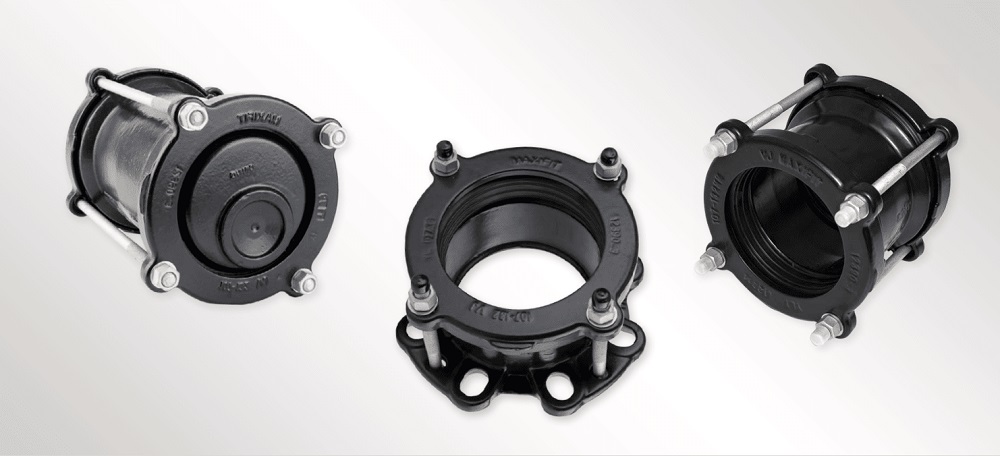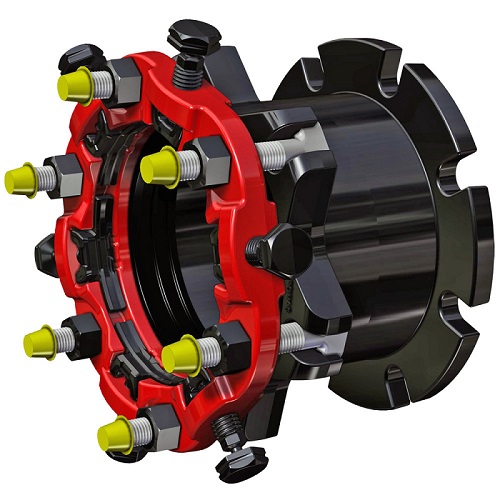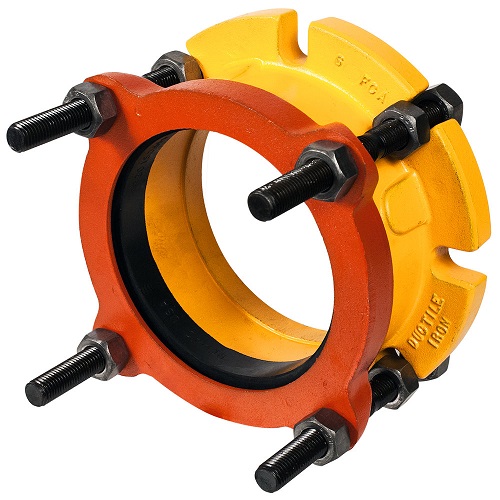Welcome to Linquip Blog. Today and in this article, we are going to deal with the question “What is a Flange Coupling adaptor?”. The information in this article gives significant but simple technical data about the working principles, operation, and usage of flange coupling adaptors.
Our team gathered all of the necessary information on this topic to eliminate the need for reading diverse content on other websites. Stay with us until the end to find the answer to your question on this topic.
An Introduction to the Flange Coupling Adaptor
A coupling or coupler is in use of piping and plumbing having a socket at one or both ends allowing two pipes or tubes to be joined, welded, brazed, or soldered together. Flange coupling Adaptor is used for a quick connection between the two pipes and allows the pipe at both ends to freely expand and contract in the casing stroke of the Flange Adaptor & Coupling.
The Structure, Working Principle & Function of Flange Coupling Adaptor
When it comes to couplings and fittings, we all see the image of different kinds of pipes and tubes in our minds. The applications of devices like flange coupling adaptors are exactly in the types of piping and plumbing, whether on domestic or industrial scales!
So far, you have become familiar with this industrial device and realized what it looks like. But the function and how a Flange Coupling Adaptor works! In the articles we talk about utility devices, and we give a detailed explanation of how these devices work and their processes. But today’s piece has a very simple function.
Flange adapters are an extensive family of flange joint accessories that allow the execution of joints between dissimilar flange types or flanged and non-flanged equipment. The significant flexibility gained by using these devices becomes apparent when the enormous range of common flange types in general use is considered.
In fact, most manufacturers of flanges or flanged equipment produce their own lines of flange adapter accessories, allowing their products to be integrated into other systems with ease. Although these adapters are themselves represented by a vast array of different types, they fall into two main categories. The first is flange-to-flange types, with the second being those used to join flanged and non-flanged equipment.
The flange adapter is used where the two pieces of equipment do not have similar flange types or only one-half is flanged. These adapters fall into two broad categories, namely those used on dissimilar flange pairs and those used in situations where a non-flanged part is joined to a flanged part. Flange-to-flange adapters are usually represented by adapters designed for dissimilarly-sized flanges and those used to join flanges of the same size with differing hole arrangements.
Joints featuring flanges of different sizes may easily be made using a flange adapter featuring one of each of the two flange sizes joined by a short reducer section. These adapters are simply arranged so the relevant flange sizes are matched between the parts and the adapter, and tensioned in the normal fashion.
The Structure of Flange Coupling Adaptors
Flanges are little more than flat discs or shoulders integral to or loose-fitting on the relevant part or pipe. The flange disc is fitted with a number of holes around its periphery through which locking bolts are passed. To join two similarly flanged pieces of equipment, the two halves are brought together, and locking bolts are passed through the holes in both flange discs and tensioned. This pulls the two flanges hard up against one another, effectively joining the two pieces of equipment.
Adapters used to join flanges with differing hole patterns are even simpler and typically consist of a single disc drill halfway through on either side with the two different hole patterns. The holes in the adapter are tapped with a standard screw thread so that, when slipped between the two dissimilar flanges, bolts can be used to tension each of them up against the adapter. In general, this type of adapter will be supplied with a set of the correct bolts.
The Applications of Flange Coupling Adaptor
We talked about the structure and how a Flange Coupling Adaptor works. In this section, we want to acquaint you with some of the applications of Flange Coupling Adaptors.
Flange Coupling Adaptors are often used in industrial facilities, among which we can mention items such as pipe fittings, valves, backflow preventers, flanged fittings, monitoring equipment, and retrofit of inline fittings.
Conclusion
The present article was an attempt to deal with the question “What Is a Flange Coupling Adaptor?” and deliver all the essential information about how it works and where it is used. The fluid coupling also known as hydraulic coupling is a hydrodynamic device that is used to transfer rotational power from one shaft to another by the use of transmission fluid.
If you have any experience using Flange Coupling Adaptor, we will be very glad to have your opinions about their performance in the comments on our website Linquip. Moreover, if you have any questions about this topic, you can sign up on our website and wait for our experts to answer your questions. Hope you enjoyed reading this article.
Buy Equipment or Ask for a Service
By using Linquip RFQ Service, you can expect to receive quotations from various suppliers across multiple industries and regions.
Click Here to Request a Quotation From Suppliers and Service Providers
Read More on Linquip
- What Is a jaw Coupling? With the Focus on the Working Principle, Size & Dimension
- What Is a Sleeve Coupling? Everything You Need to Know
- The Practical Guide To Types of Coupling in 2021
- What is Grid Coupling? Essential Details You Need To Know
- A Cheat Sheet For The Types of Pump Couplings
- Advanced Guide: Types of Rigid Couplings
- The Quick Guide To The Types of PVC Couplings
- Types of Shaft Couplings: A Simple Guide to The Types
- What is Disc Coupling: A Complete Guide
- The Complete Library of Types of Flexible Coupling
- Types of Gear Coupling: a Basic Yet Crucial Description of the Types
- What Is a Fluid Coupling? Diagram + Parts





